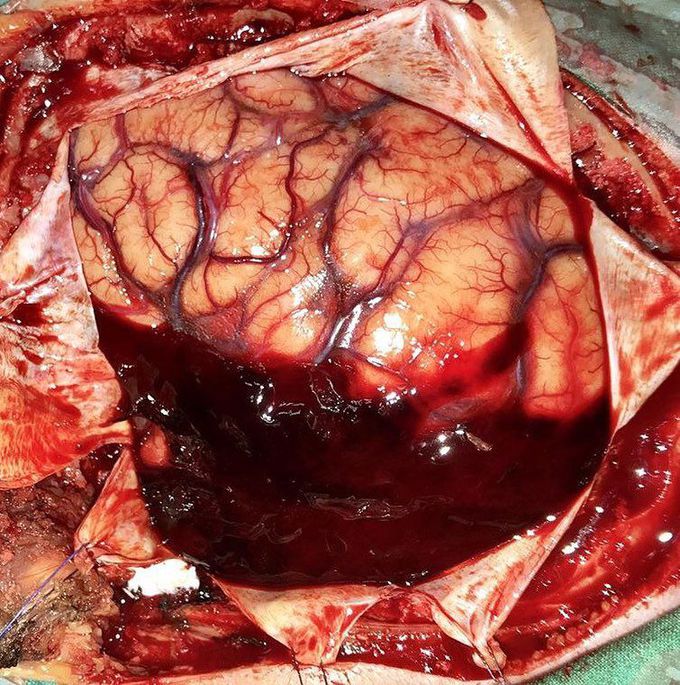


Exposing a subdural hematoma!
This is, no doubt, among the deadliest of all head injuries. It occurs not only in patients with severe head injury but also in patients with less severe injuries, particularly those who are elderly or receiving anticoagulants. The bleeding fills the brain area, compressing brain tissue. It also leads to increased intracranial pressure and edema of the brain, which decreases the cerebral perfusion pressure, leading to further ischemia, edema and eventual brain herniation and death if left untreated. In a chronic subdural hematoma, small veins on the outer surface of the brain may tear, causing a gradual and slow bleeding in the subdural space, which can hide symptoms for several days or weeks. Small subdural hematomas can be managed by careful monitoring until the body heals itself. Other small subdural hematomas can be managed by inserting a temporary small catheter through a hole drilled through the skull and sucking out the hematoma. The big ones require surgery. This picture shows the skull wide open with the brain completely exposed after performing a craniotomy and the hematoma being carefully evacuated.Photo by @luqueleopoldo

